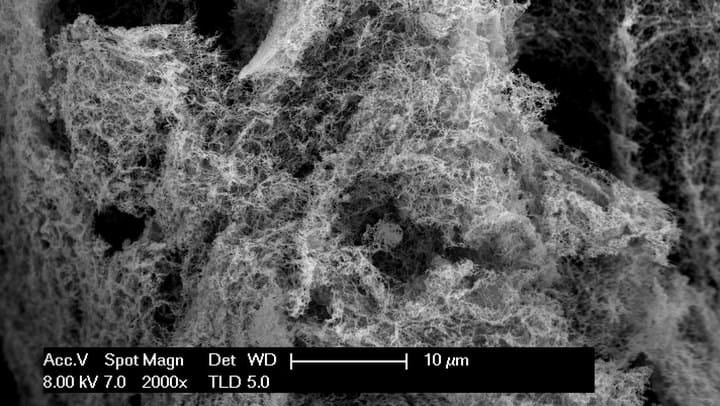New catalyst for hydrogen production

A CATALYST composed of nickel and iron has been developed that will make the production of hydrogen more energy efficient and cost effective. Hydrogen is an important fuel source as the only emission from a hydrogen fuel cell is water vapour.
With the UK planning to pull the plug on petrol and diesel cars by 2040, and Volvo pledging to only make electric or hybrid cars from 2019, greener forms of powering vehicles are becoming increasingly important. While the use of electric cars is on the rise, hydrogen fuel cell cars may offer another alternative to petrol and diesel cars.
Hydrogen fuel cells work by causing stored hydrogen to react with the oxygen in the air, producing electricity and water vapour. The energy is created onboard the car without the need to recharge a battery as with electric cars. However, creating the hydrogen fuel in the first place can be quite a challenge.
Hydrogen (and oxygen) can be produced by electrolysing water, provided that a catalyst is used to speed up the reaction. Catalysts commonly used for electrolysis are expensive precious metals such as platinum or ruthenium.
The new catalyst, developed by researchers at Washington State University, US, is based on nickel and iron, which are cheaper and more abundant. The new catalyst is a foam with nanometre-scale pores and looks like a tiny sponge. The sponge-like structure increases the surface area compared to a platinum catalyst, which is usually a thin coating on a carbon base, allowing more reactions to occur and thus increasing the efficiency.
The voltage required to produce hydrogen is also lower than with platinum or ruthenium catalysts, making the process more energy efficient. Preliminary tests also show that the nickel-iron nanofoam suffers very little loss over a 12-hour period compared to other catalysts which are less stable. The nanofoam catalyst also only takes around five minutes to produce.
"We took a very simple approach that could be used easily in large-scale production," said Shaofang Fu, lead author of the paper published in Nano Energy. "This is just lab-scale testing, but this is very promising," added Yuehe Lin, who led the research.
The next step is large-scale testing of the catalyst production and testing the catalyst in industrial-scale electrolysers.
Nano Energy: http://doi.org/gcvsvf
Recent Editions
Catch up on the latest news, views and jobs from The Chemical Engineer. Below are the four latest issues. View a wider selection of the archive from within the Magazine section of this site.




